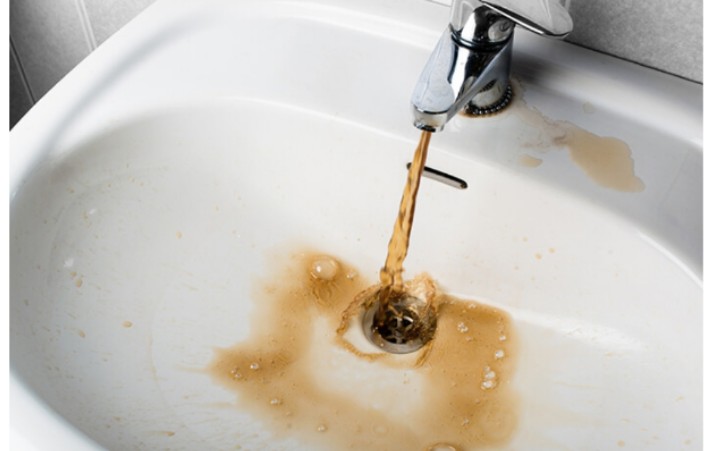Tap water is something that we daily use in our lives without much thought. We drink it, cook with it, and shower in it, assuming it is clean and safe. But have you ever wondered what is really in your tap water?
While most water treatment facilities do a very good job of making our tap water safe, but still some contaminants can find their way into our water home supply. In this blog post, we will cover some hazardous contaminants that may be secretly lurking in your tap water.
Some Dangerous Contaminants Lurking in Tap Water
You might be shocked to know that even the treated tap water from our home supplies can contain some harmful substances. Here are some of the most harmful contaminants usually found in tap water globally:
- Lead:
Lead is one of the most dangerous contaminants in tap water. It usually enters from the home water supplies through old pipes. Some research shows that even a low level of lead can be harmful, especially for kids as lead can affect brain development, cause learning disabilities, and result in behavioral problems.
For adults, long-term exposure to lead can cause kidney damage and high blood pressure.
- Chlorine and Chloramine:
Water treatment plants usually use chlorine and chloramine to kill harmful viruses and bacteria in water. They are effective for disinfection, while these chemicals can sometimes cause skin irritation and dryness.
Over time, consuming tap water with high levels of Chlorine and Chloramine can also cause respiratory issues in adults and an increased risk of certain cancers.
- Pesticides and Herbicides:
Runoff from agricultural lands can introduce pesticides and herbicides into the tap water supplies. Both pesticides and herbicides are good for killing pests and weeds, but sometimes they can also harm humans. Long exposure to these chemicals has been associated with many severe diseases in humans such as hormone disruption, reproductive issues, and even cancer.
- Nitrates:
Nitrates are another common agricultural pollutant. They come from fertilizers and animal waste. When nitrates enter the tap water, they can pose some significant risks, especially to newborns. High levels of nitrates can cause “Blue baby syndrome”, it is a condition that decreases the oxygen flow in the blood.
- Fluoride:
Fluoride is usually added to tap water to promote dental health in adults. However, long-term exposure to fluoride can cause a condition known as “Fluorosis”, which changes the color of the teeth and weakens them teeth.
Too much fluoride in water can cause some serious problems, such as weakened teeth and discoloration. However, scientists are still studying its other potential effects on human health.
- Heavy Metals (Mercury, Arsenic, & Cadmium):
Heavy metals can also contaminate tap water through industrial pollution, mining activities, and natural deposits. These heavy metals are extremely harmful even in small moderation as well.
Exposure to Arsenic is linked to skin damage, cancer, and cardiovascular issues in adults. On the other hand, mercury can damage the human nervous system, and cadmium affects the kidneys and bones in several ways.
Beyond these well-known dangers, another insidious class of contaminants gaining significant attention is per- and polyfluoroalkyl substances, commonly known as PFAS or ‘forever chemicals.’ These man-made chemicals have been widely used in various industrial and consumer products, leading to their pervasive presence in water supplies worldwide. Unlike many other pollutants, PFAS are exceptionally persistent, resisting degradation and accumulating in the environment and human body over time. Their widespread nature and unique properties mean that exposure can occur through drinking water, and it’s crucial to learn which health conditions are tied to PFAS, as research continues to uncover their diverse and serious health impacts.
How to Effectively Remove Scary Contaminants from Tap Water
The good news is that you can take some important steps to make sure that your tap water is completely safer and cleaner, some of them are:
Test your Water:
Regular testing of your tap water is important to understanding what harmful contaminants are present. Home water testing kits are available for various substances such as mercury, lead, nitrates, and bacteria.
For a more comprehensive testing and analysis, consider sending a sample of your tap water to a certified laboratory.
Install a Water Filter:
Water filtration systems are one of the most convenient and effective ways to improve tap water quality. Below are the main types of water filters and what they generally remove:
- Activated carbon filters: Activated carbon filters are great for removing harmful contaminants such as chlorine, chloramine, pesticides, and herbicides. These water filters upgrade the taste and odor of your tap water.
- Reverse Osmosis Systems: RO filter systems remove heavy metals, fluoride, and microplastic. These water filters are highly effective in removing harmful contaminants from tap water, but they are costly.
- Ultraviolet Filters: These are good at killing bacteria, viruses, and parasites. They are a good option for those areas where microbial contamination is a concern.
Boil Water:
Boiling water is an easy and simple way to remove harmful bacteria, viruses, and parasites. Although, boiling does not remove some chemical contaminants such as pesticides and herbicides.
Use a Water Softener:
If your home water supply contains high levels of heavy metals such as arsenic, mercury, and cadmium, then a water softener can help you out with this matter. Water softeners work by exchanging ions in the tap water to reduce mineral and metal content.
Avoid the Use of Plastic Water Bottles:
While bottled water may seem a safer alternative, but it is not always effective. Many plastic water bottles contain harmful contaminants such as BPA in the water, especially when introduced to heat. Instead, invest in a rescuable water bottle, consider a BPA-free water bottle, and fill it with filtered water for effective results.
Frequently Asked Questions
What health issues are associated with the consumption of contaminated water?
There are numerous negative impacts of drinking polluted water, some of the major ones are:
- Gastrointestinal issues
- Reproductive illness
- Increased risk of cancer
How do impurities get into the water?
Below are the major sources through which contaminants get into tap water.
- Agriculture runoff
- Industrial wastage
- Sewage discharges
Conclusion:
The next time when you offer yourself a glass of tap water, keep in mind that it might not be as pure as it seems or we think. Harmful contaminants such as lead, pesticides, microplastic, and bacteria can lurk in your tap water, creating risks to your overall health.
By understanding these risks and taking proactive steps such as installing a water filter, boiling your water, and testing your water regularly, you can make sure that your tap water is safe for use. Access to pure, clean water is a fundamental human right.


